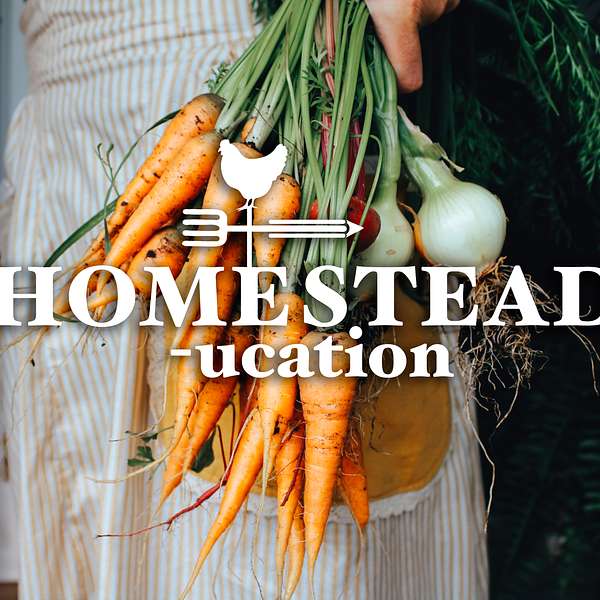
HOMESTEADucation
A podcast for those who are looking to slow down, return to their roots and feel more self-sufficient. Join Mandi Pickering of Wild Oak Farms, and Angela Ferraro-Fanning of Axe & Root Homestead in their new podcast HOMESTEADucation, created by homesteaders for homesteaders. This podcast will explore different facets of homesteading in detail including vegetable gardening, fruit orchard care, animal husbandry, and more. Follow us on Instagram: Angela @axeandroothomestead and Mandi @wildoakfarms
HOMESTEADucation
Growing Onions- Seeds/Sets/Started
Starting onions from seed:
Onion seeds are tiny little black seeds. Go figure, they are like more than 50% of
other seeds.
They prefer to be planted in loose/fertile soil and or seed starting mix.
You *can start them right in the ground if you have a longer growing season, but
most gardeners that aren’t planting starts are starting seeds early in the year. Late-
Jan- Feb.
If you plant directly in your beds plant them an inch deep and keep rows at least 1
foot apart.
Onion plants have very shallow roots and throughout the season will require a
consistent watering plan or irrigation for best results.
A lot of folks plant start onion seeds indoors or in a greenhouse using a bunching
method. Where many seeds are planted in almost a broadcast method in a larger
pot. The seeds will grow and almost look like grass with tiny black specs on top.
When it comes time to transplant outdoors you lift the entire bunch and carefully
separate the individual seedlings. It seems tedious, but as long as your soil is fertile
and loose its not too bad.
Planting onion sets:
Be sure when you are sourcing them that you source from LOCAL places and or
know your grow zone and what onion varieties grow best. IE: short day and long
Day.
Long day vs Short day onions:
This is just referring refers to the approximate hours of daylight a variety of onion
will need in order to start developing the bulb. Short Day means about ten hours a
day, while long day means twelve hours or more. This is important to consider when
choosing for your zone.
pH desired: 5.5-6.5- more acidic if you can.
In general, onions are ready for harvest in 100 to 125 days from seed. If you planted
onion sets, expect to harvest in 60 to 80 days.
How many onions do you eat in a year?
Curing?
Storage?
Onions prefer 6-8 hours of sun per day.
Plan for a spot with access to plenty of moisture as onions are slow drinkers. They do well in damp soil but need drainage… soaking wet feet leads to rotting bulbs.
Know your zone and onion type. Long day onion varieties are generally best suited for zones 6 and lower and require 14-16 hours of daylight. Short day onions need about 10 hours per day and work for zones 7+. Day neutral onion varieties are pretty adaptable with about 12 hours of sunlight needed daily. Ideally suited for zones 5 and 6.
If you’re planning on storing onions over the winter, grow storage varieties suited for long term keeping. My favorites are Aisla Craig for short term storage and Stuttgarter, Yellow Sweet Spanish, Patterson, and Yellow of Parma for long term. I’m not really a red onion person so can’t speak to that as much. 😉
Seeds are slow germinating and can be started in January with transplanting in spring into the garden.
Leeks, chives, Egyptian walking onions, ramps, and welsh onions are all great varieties to add to your must try growing list! Most of these are perennials too.
Keep onions well weeded as they don’t like competitors.
Plan to grow onions alongside brassicas like broccoli, cauliflower, kale, and kohlrabi. They help to repel cabbage worms/moths with their strong scent when closely grown together. Greens, tomatoes and carrots are also good companions. So are fruit trees! Onions are great in guilds.
Never plant onions near peas or beans, peanuts or groundnut, nor asparagus. They stunt one another’s growth.
Harvest onions when they tell you to; their greens will usually fall over and begin to yellow. You can also see their papery sk